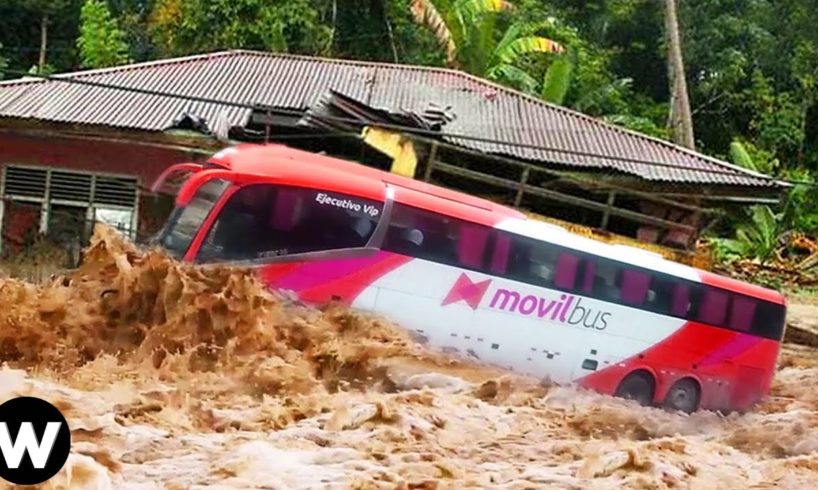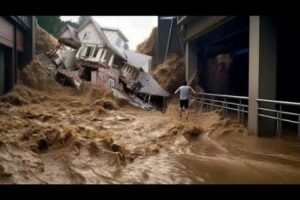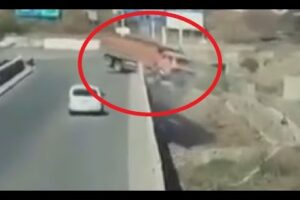
10 Most Horrific Monster Natural Disasters Caught On CCTV Camera
Natural disasters, such as hurricanes, earthquakes, floods, wildfires, and tornadoes, are formidable forces that can strike with little warning. The sheer power and destructive capacity of these events necessitate heightened awareness and preparedness. Educating ourselves about the various types of natural disasters is crucial in developing effective emergency plans and response strategies. By comprehending the intricacies of these phenomena, we can mitigate risks and enhance our resilience. Governments, communities, and individuals must unite in implementing proactive measures, such as early warning systems, evacuation plans, and disaster relief initiatives. Together, we can build a safer future, where the impacts of natural disasters are minimized, and lives are safeguarded.
WEWIN is a channel that aggregates Educational Top 15 videos about Weather, Natural Disasters, Historical Events, Caught on Camera and much more! Subscribe to never miss an upload!
WEWIN is creating the best new educational videos about the lesser known stories from around the world. We post Top 10’s, Top 15’s, Caught on Camera and much more! Be sure to SUBSCRIBE to never miss an upload!
Every day many parts of the world face natural disasters. Natural disasters will destroy all that is man-made and our videos will show you that.
Please share these video Natural Disasters to everyone.
New videos in natural disasters will be posted every day, email me when you need it!
Be sure to like and subscribe if you enjoyed this content.
Thanks for watching and I’ll see you in the next one!
Click CC for subtitle: English / United Kingdom / Canada / Japanese / Korean
SUBSCRIBE: https://bit.ly/3kQ8CN4
→ Watch more videos here: https://bit.ly/3W8lPOj
→ Playlists Natural Disasters: https://bit.ly/3UOyXqM
→ Facebook: https://www.facebook.com/wewinstormmoments
→ WEBSITE: https://wewinstormmoments.blogspot.com/
We use under: Copyright disclaimer section 107 of the Copyright Act 1976. “fair use” is allowed for purposes such as criticism, comment, news reporting, teaching. scholarships and research.
If there are copyright issues, please contact: factswag2@gmail.com
Copyright Music By:
Adrev for a 3rd Party
and other artists
https://www.storyblocks.com/audio
Background music is used in the video by Kevin MacLeod, licensed under the Creative Commons – Attribution 4.0 License. https://creativecommons.org/licenses/by/4.0/
Source: http://incompetech.com/music/royalty-free/index.html?isrc=USUAN1100879
Artist: http://incompetech.com
——————–
#wewin #naturaldisasters #caughtoncamera
source







10 Most Horrific Monster Natural Disasters Caught On CCTV Camera
APOKALIPSIA , Ka Li Ma Sha In Ge , KLIMA SHAINGE. Wida Guth Maket 👍 , DA O .
God loves the world, so much so that he gives His only begotten Son to them, that all who believe in Him may not perish, but have eternal life.🌟😍The Lord Jesus said, "Truly, truly, I say to you: He who listens to my words and believes in him who sent me has eternal life and will not be condemned, but has already passed from death to life.
For the will of my Father is to give eternal life to all who see the Son and believe, and on the last day I will raise him up
I have given them eternal life, and they shall never perish, and no one shall take them out of my hand.
When the Gentiles heard these words, they rejoiced and praised the word of God, and everyone who was destined for eternal life believed.🌟🌟🙌🏻🙌🏻❤️❤️❤️
Volcanic eruptions can unleash torrents of lava, ash, and toxic gases, transforming landscapes and threatening nearby communities.
Blizzards, characterized by heavy snowfall, strong winds, and freezing temperatures, can paralyze regions and pose threats to human safety.
Nature disasters, such as hurricanes, earthquakes, and wildfires, can strike with little warning, leaving destruction and devastation in their wake.
Avalanches, triggered by snowfall and unstable slopes, can bury everything in their path, posing a significant risk to mountainous areas.
Wildfires, fueled by dry conditions and strong winds, can rapidly spread, engulfing forests, destroying homes, and polluting the air.
Heatwaves, marked by extended periods of exceptionally high temperatures, can pose health risks, strain energy resources, and impact agriculture.
Epidemics and pandemics, while not traditionally considered natural disasters, can have profound impacts on human health, economies, and social systems, reminding us of our vulnerability to biological threats.
Earthquakes, as the earth's tectonic plates shift, can shake the ground violently, toppling buildings and triggering landslides.
Droughts, characterized by prolonged periods of little to no rainfall, can lead to water scarcity, crop failures, and environmental degradation.
Sandstorms, arising from strong winds carrying loose particles of sand, can reduce visibility and damage infrastructure.
Tsunamis, often generated by undersea earthquakes or volcanic activity, can unleash enormous waves that inundate coastal regions, causing widespread destruction.
Tornadoes, with their swirling winds, can tear through communities, demolishing homes and causing widespread chaos.
Hailstorms, with their large and damaging hailstones, can wreak havoc on crops, vehicles, and buildings.
Sinkholes, formed by the collapse of underground cavities, can suddenly appear, swallowing buildings, roads, and anything in their vicinity.
devastating
I think the term 'climate change' has been given many a feeling of control. As though somehow the current trends can be mitigated and minimized by changing habits and "living cleaner". This will not change the current climate changes. Perhaps changing the term to 'changes in climate'. As honestly there is nothing that can be done.
So now your showing it over n over
To many commercials
Catastrophes naturelles ?
You don't understand the world we died to little by little.
We going to died soon. May yr. Comes.
The driving so we'll to the world not understand.
Transformation of Earth
I have commented 2 years and I still confirm that I solved the global warming problem.
From what I have researched and analyzed The violence is increasing than it has been every year.
if
UN approves me to solve global warming problem, I will fix the problem ASAP. There is enough information I have to prove to everyone that scientific approaches and solutions to global warming can be restored to normal…
希望美國與他們的邪惡聯盟的末日早日到來,免了這世界的人活在他們美國的強暴統治之下
Hurricanes and tropical storms can unleash powerful winds, heavy rainfall, and storm surges that inundate coastal areas.
Landslides, often caused by heavy rainfall or seismic activity, can result in the sudden movement of soil and rock, destroying homes and blocking roads.
Storm surges, driven by tropical cyclones or intense storms, can inundate coastal areas, causing significant flooding and erosion.
Volcanic eruptions can release ash clouds, lava flows, and pyroclastic flows, endangering nearby communities.
Droughts, characterized by prolonged periods of little to no rainfall, can lead to crop failures, water scarcity, and ecosystem degradation.
Flooding, caused by heavy rain, melting snow, or dam failures, can submerge low-lying areas, causing damage to infrastructure and displacing communities.
Earthquakes, resulting from tectonic plate movements, can shake the ground violently, causing buildings to collapse, landslides, and tsunamis.
Tornadoes, with their swirling winds, can tear through towns and cities, leaving a path of devastation in their wake.
Blizzards, characterized by heavy snowfall, strong winds, and low visibility, can paralyze regions, disrupt transportation, and pose risks to human safety.
Hailstorms, with their large hailstones, can cause damage to buildings, vehicles, and crops.
Avalanches, triggered by snowfall, can cascade down mountain slopes, burying everything in their path.
Wildfires can spread rapidly, consuming vast areas of land, destroying homes, and causing air pollution.
Natural disasters, such as earthquakes, can cause widespread destruction and loss of life.
Tsunamis, triggered by undersea earthquakes or volcanic activity, can unleash enormous waves that inundate coastal regions.